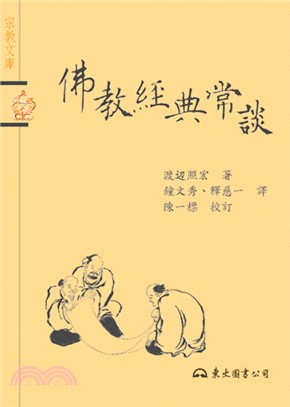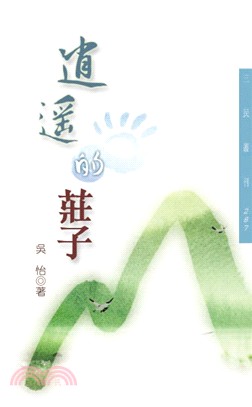商品簡介
目次
1.1 The nature of analytical chemistry 分析化學的性質
1.2 The role of analytical chemistry 分析化學的作用
1.3 The classification of analytical chemistry分析化學的分類
1.4 The total analytical process分析全過程
Terms to understand
重點內容概述
Chapter 2 Errors and Data Treatment in Quantitative Analysis 定量分析中的誤差及數據處理
2.1 Fundamental terms of errors誤差的基本術語
2.2 Types of errors in experimental data實驗數據中的誤差類型
2.2.1 Systematic errors 系統誤差
2.2.2 Random errors偶然誤差
2.3 Evaluation of analytical data分析數據的評價
2.3.1 Tests of significance顯著性檢驗
2.3.2 Rejecting data可疑值取舍
2.4 Significant figures有效數字
Problems
Terms to understand
重點內容概述
Chapter 3 Titrimetric Analysis滴定分析法
3.1 General principles基本原理
3.1.1 Relevant terms of titrimetric analysis滴定分析相關術語
3.1.2 The preparation of standard solution and the expression of concentration 標準溶液的配制與濃度表示方法
3.1.3 The types of titrimetric reactions滴定反應類型
3.2 Acid-base titration酸堿滴定
3.2.1 Acid-base equilibria 酸堿平衡
3.2.2 Titration curves滴定曲線
3.2.3 Acid-base indicators酸堿指示劑
3.2.4 Applications of acid-base titration酸堿滴定的應用
3.3 Complexometric titration配位滴定
3.3.1 Metal-chelate complexes金屬螯合物
3.3.2 EDTA 乙二胺四乙酸
3.3.3 EDTA titration curves EDTA滴定曲線
3.3.4 Metal Ion indicators金屬離子指示劑
3.3.5 Applications of EDTA titration techniques EDTA滴定方法的應用
3.4 Oxidation-reduction titration氧化還原滴定
3.4.1 Redox reactions氧化還原反應
3.4.2 Rate of redox reactions氧化還原反應的速率
3.4.3 Titration curves滴定曲線
3.4.4 Redox indicators氧化還原指示劑
3.4.5 Applications of redox titrations氧化還原滴定的應用
3.5 Precipitation titration沉淀滴定
3.5.1 Precipitation reactions沉淀滴定反應
3.5.2 Titration curves滴定曲線
3.5.3 End-point detection終點檢測
Problems
Terms to understand
重點內容概述
Chapter 4 Potentiometry 電位分析法
4.1 Introduction簡 介
4.1.1 Classes and characteristics分類及性質
4.1.2 Definition定 義
4.2 Types of potentiometric electrodes電極種類
4.2.1 Reference electrodes 參比電極
4.2.2 Indicator electrodes指示電極
4.2.3 Electrode response and selectivity電極響應及選擇性
4.3 Potentiometric methods and application電位法及應用
4.3.1 Direct potentiometric measurement 直接電位法
4.3.2 Potentiometric titrations電位滴定
4.3.3 Applications of potentiometry 電位法應用
Problems
Terlns to understand
重點內容概述
Chapter 5 Chromatography色譜法
5.1 An introduction to chromatographic methods色譜法概述
5.2 Fundamental theory of gas chromatography氣相色譜基本原理
5.2.1 Plate theory塔板理論
5.2.2 Kinetic theory(rate theory) 速率理論
5.2.3 The resolution Rs as a measure of peak separation 分離度
5.3 Gas chromatography 氣相色譜
5.3.1 Components of a gas chromatograph 氣相色譜儀的組成
5.3.2 Stationary phases for gas-liquid chromatography 氣液色譜固定相
5.3.3 Applications of gas-liquid chromatography 氣液色譜的應用
5.3.4 Adsorption chromatography 吸附色譜
5.4 High performance liquid chromatography 高效液相色譜
5.4.1 Instrumentation 儀器組成
5.4.2 High-performance partition chromatography 高效分配色譜
5.5 Miscellaneous separation methods 其他分離方法
5.5.1 High-performance ion-exchange chromatography 高效離子交換色譜
5.5.2 Capillary electrophoresis 毛細管電泳
5.5.3 Planar chromatography 平板色譜
Problems
Terms to understand
重點內容概述
Chapter 6 Atomic Absorption Spectrometry原子吸收光譜分析法
6.1 Introduction 概述
6.2 Principles 原理
6.2.1 The process of AAS,resonance line and absorption line 原子吸收光譜法的過程,共振線及吸收線
6.2.2 The number of ground atom and the temperature of flame 基態原子數與光焰溫度
6.2.3 Quantitative analysis of AAS原子吸收光譜定量分析
6.3 Instrumentation 儀 器
6.3.1 Primary radiation sources 光源
6.3.2 Atomizer 原子儀器
6.3.3 Optical dispersive systems 分光系統
6.3.4 Detectors 檢測器
6.3.5 Signal measurements 信號測量
6.4 Quantitative measurements and interferences 定量測定及干擾
6.4.1 Quantitative measurements 定量測定
6.4.2 Interferences 干擾
6.4.3 Sensitivity
6.5 Applications of AAS原子吸收光譜法的應用
Problems
Terms to understand
重點內容概述
Chapter 7 Ultraviolet and Visible Spectrophotometry 紫外-可見分光光度法
7.1 Introduction簡 介
7.2 Ultraviolet and visible absorption spectroscopy 紫外-可見吸收光譜
7.2.1 Introduction for radiant energy 輻射能簡介
7.2.2 Selective absorption of radiation and absorbance spectrum 物質對光的選擇性吸收和吸收光譜
7.2.3 Absorbing species and electron transition 吸收物質與電子躍遷
7.3 Law of absorption吸收定律
7.3.1 Lambert-Beers law朗伯-比爾定律
7.3.2 Absorptivity吸光系數
7.3.3 Apparent deviations from Beers law對比爾定律的明顯偏離
7.4 Instruments儀器
7.5 General types of spectrophotometer分光光度計種類
7.6 Application of UV-Vis absorption spectroscopy 紫外-可見吸收光譜的應用
7.6.1 Application of absorption measurement to qualitative analysis 光吸收測定在定性分析上的應用
7.6.2 Quantitative analysis by absorption measurements 光吸收測量定量分析法
7.6.3 Derivative spectrophotometry 導數分光光度法
Problems
Terms to understand
重點內容概述
Chapter 8 Infrared Absorption Spectroscopy紅外吸收光譜
8.1 Theory of infrared absorption紅外吸收基本原理
8.1.1 Dipole changes during vibrations and rotations 振轉運動中的偶極距變化
8.1.2 Mechanical model of stretching vibrations 伸縮振動機械模型
8.1.3 Quantum treatment of vibrations 振動的量子力學處理、
8.1.4 Types of molecular vibrations分子振動形式
8.2 Infrared instrument components紅外儀器組成
8.2.1 Wavelength selection波長選擇
8.2.2 Sampling techniques 采樣技術
8.2.3 Infrared spectrophotometers for qualitative analysis 定性分析用紅外分光光度計
8.2.4 Other techniques其他技術
8.3 The group frequencies of functional groups in organic compounds 有機化合物官能團的特徵頻率
8.4 The factors affecting group frequencies 影響基團特徵吸收頻率的因素
8.4.1 Adjacent groups 鄰近基團的影響
8.4.2 Hydrogen bonding 氫鍵
8.5 Qualitative applications to structural analysis 結構分析的定性應用
Problems
Terms to understand
重點內容概述
Chapter 9 Nuclear Magnetic Resonance Spectroscopy 核磁共振波譜法
9.1 Theory of nuclear magnetic resonance 核磁共振理論
9.1.1 Quantum description of NMR NMR 的量子描述
9.1.2 Classical description of NMR NMR 的經典描述
9.2 Experimental methods of NMR spectroscopy NMR波譜的實驗方法
9.3 The chemical shift of protons in organic compounds 有機化合物中質子的化學位移
9.3.1 Souroe of the chemical shift化學位移產生原
9.3.3 Environmental effects on the chemical shift of proton NMR spectra 影響NMR波譜中質子化學位移的環境因素
9.4 Spin-Spin coupling 自旋-自旋耦合
9.4.1 Source of Spin-Spin coupling and splitting 自旋-自旋耦合與裂分的產生原因
9.4.2 Coupling constant耦合常數
9.4.3 Rule8 governing the interpretation of spectra光譜解析規則
9.5 Qualitative applications of proton NMR質子NMR波譜的定性應用
Problems
Terms to understand
重點內容概述
Chapter 10 Mass Spectrometry質譜法
10.1 The principle of mass spectroscopy and mass spectrometer 質譜法和質譜儀的原理
10.2 Mass spectra質譜圖
10.2.1 The electron impact ionization process 電子轟擊離子過程
10.2.2 The molecular ion 分子離子
10.2.3 Isotope peaks 同位素離子峰
10.2.4 Peaks for collision products 碎片離子峰
10.2.5 The base peak 基峰
10.3 Qualitative applications of mass spectroscopy 質譜法的定性應用
Problems
Terms to understand
重點內容概述
Appendix 附錄
References 參考文獻
主題書展
更多主題書展
更多書展本週66折
您曾經瀏覽過的商品
購物須知
大陸出版品因裝訂品質及貨運條件與台灣出版品落差甚大,除封面破損、內頁脫落等較嚴重的狀態,其餘商品將正常出貨。
特別提醒:部分書籍附贈之內容(如音頻mp3或影片dvd等)已無實體光碟提供,需以QR CODE 連結至當地網站註冊“並通過驗證程序”,方可下載使用。
無現貨庫存之簡體書,將向海外調貨:
海外有庫存之書籍,等候約45個工作天;
海外無庫存之書籍,平均作業時間約60個工作天,然不保證確定可調到貨,尚請見諒。
為了保護您的權益,「三民網路書店」提供會員七日商品鑑賞期(收到商品為起始日)。
若要辦理退貨,請在商品鑑賞期內寄回,且商品必須是全新狀態與完整包裝(商品、附件、發票、隨貨贈品等)否則恕不接受退貨。

























